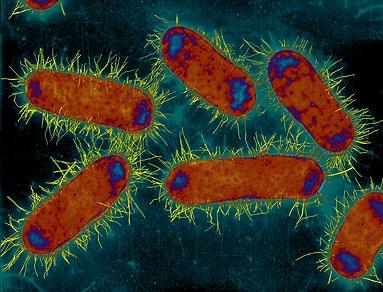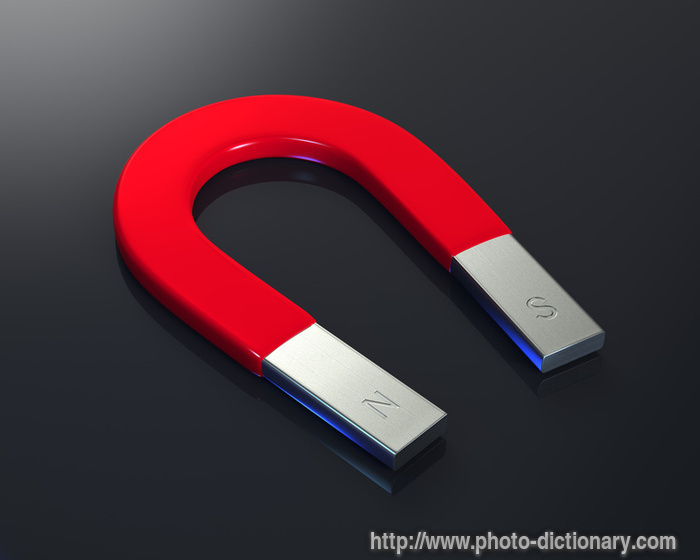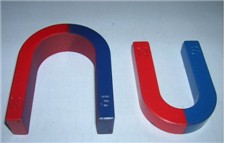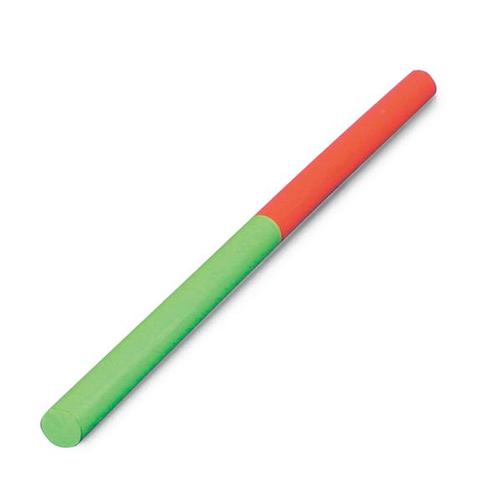Friday, 7 December 2012
Thursday, 6 December 2012
Tuesday, 4 December 2012
Monday, 3 December 2012
Wednesday, 28 November 2012
Microorganisms
Microorganisms are very tiny one-celled organisms, viruses,
fungi, and bacteria, and are found everywhere in the world. They are found in
all living things, plants and animal. There are more microorganisms on and
inside your body than there are cells that make up your entire body.
Microorganisms can live in the air, on land, and in fresh or salt water
environments. Some of them, pathogens, can be harmful and causes diseases, but
there are some microorganisms that are needed for living things to survive.
 |
| protozoa |
 |
| virus |
 |
| fungi |
 |
| bacteria |
Monday, 12 November 2012
Animal Quiz
1. What food makes up nearly all (around 99%) of a
Giant Panda’s diet?
|
2. True or false? Mice live for up to 10 years.
|
3. What is the name of the phobia that involves an
abnormal fear of spiders?
|
4. What is the largest type of ‘big cat’ in the world?
|
5. True or false? Crocodiles have no sweat glands so
they use their mouths to release heat.
|
6. Eagles are very good at spotting potential prey from
a long distance, why?
|
7. What are female elephants called?
|
8. True or false? Bats are mammals.
|
9. Bees are found on every continent of earth except
for one, which is it?
|
10. True or false? Cats spend an average of 13 to 14
hours a day sleeping.
|
11. What is the fastest land animal in the world?
|
12. A ‘doe’ is what kind of animal?
|
13. True or false? Cougar’s are herbivores.
|
14. Groups of lions are known as what?
|
15. Is a dolphin a mammal?
|
16. What is the largest land animal in the world?
|
17. True of false? Snakes have slimy skin.
|
18. What is the only continent on earth where Giraffes
live in the wild?
|
19. How many pairs of wings does a bee have?
|
20. What type of animal is the largest primate in the
world?
|
21. Is a shark a fish or a mammal?
|
22. What is the most recognizable feature of a
hedgehog’s appearance?
|
23. True or false? Owls are far-sighted, meaning that
anything within a few inches of their eyes can’t be seen properly.
|
24. What is the name of an adult female horse?
|
25. What are baby goats called?
|
26. What is the tallest animal in the world?
|
27. True or false? Rabbits are born blind.
|
28. What is the most recognizable physical feature of
the male lion?
|
29. How many legs does a spider have?
|
30. The crocodile species is believed to have been
around for how long? 2 million years or 200 million years?
|
Sunday, 11 November 2012
Solar Eclipse Educational Video
What is Solar Eclipse ?
An eclipse of the sun occurs when the moon revolving in
its orbit around the earth comes between the sun and the earth. The moon blocks
the light of the sun and a shadow of the moon is cast over the earth's
surface..
How does the moon block the sun? By a fortunate coincidence, the sun's diameter is 400 times larger than that of the moon, and at the same time, it is 400 times as far away. From where we are, this creates the illusion that they are the same size. If we look through a filter at the sun, it looks exactly like the moon on a full moon night. When the moon passes in front of the sun, the shadow falls on the earth and it appears to exactly cover the sun's disc. This is what a solar eclipse is - a shadow.
How does the moon block the sun? By a fortunate coincidence, the sun's diameter is 400 times larger than that of the moon, and at the same time, it is 400 times as far away. From where we are, this creates the illusion that they are the same size. If we look through a filter at the sun, it looks exactly like the moon on a full moon night. When the moon passes in front of the sun, the shadow falls on the earth and it appears to exactly cover the sun's disc. This is what a solar eclipse is - a shadow.
Saturday, 10 November 2012
What is a Lunar Eclipse?
A lunar eclipse is when the Earth comes between the Sun and the Moon causing a shadow of Earth on the Moon. The shadow can partially or totally cover the Moon, giving us partial and total eclipses.
Unlike solar eclipses, lunar eclipses are obviously safe to observe without protective gear for the eyes. You may notice that the moon looks spectacularly bright just before and after the eclipse. The Moon's surface is rather reflective, and close to the time of a lunar eclipse you are seeing the most direct reflection possible from the Moon's surface. If it is a very clear night, you will get a beautiful view of the moon. You will see various phases of illumination similar to those observed over the course of a lunar cycle.
A lunar eclipse occurs when the full Moon lines up precisely with the Earth and the Sun, and the Earth's shadow falls on the Moon. Greek astronomers had figured that out over 2000 years ago, and knew that the curved shadow on the Moon indicated that the Earth was a sphere.
Unlike solar eclipses, lunar eclipses are obviously safe to observe without protective gear for the eyes. You may notice that the moon looks spectacularly bright just before and after the eclipse. The Moon's surface is rather reflective, and close to the time of a lunar eclipse you are seeing the most direct reflection possible from the Moon's surface. If it is a very clear night, you will get a beautiful view of the moon. You will see various phases of illumination similar to those observed over the course of a lunar cycle.
A lunar eclipse occurs when the full Moon lines up precisely with the Earth and the Sun, and the Earth's shadow falls on the Moon. Greek astronomers had figured that out over 2000 years ago, and knew that the curved shadow on the Moon indicated that the Earth was a sphere.
Friday, 9 November 2012
Thursday, 8 November 2012
Answering Techniques
How To Answer Questions of Section B for UPSR Science paper
Example:
Distance of the object from the light source /cm : 30, 40, 50, 60,
Size of shadow /cm2 : 10, 8, 6, 4
1. ( i ) what is changed? : distance of the object from the light source
( ii ) what is measured? : Size of the shadow
( iii ) what to keep the same? : the position of the light source
2. What is the purpose/aim of the experiment?
To investigate the relationship between the distance of the object from the light source and
the size of the shadow.
3. What is the relationship between the distance of the object from the light source and size
of shadow?
When the distance increases, the size of the shadow decreases.
4. What is the trend in the size of the shadow?
Decreasing ( words used to describe the trend are: increase, decrease or keep the same )
5. Predict the size of shadow when the distance of the object from the light source is 70cm.
2cm2
6. When a piece of glass is placed in between the light source and the screen, what can
you observe? (observation )
There is no shadow shown on the screen.
7. What can you infer? (inference )
Because the glass is a transparent object.
8. What can you conclude from the experiment? (conclusion )
When the distance of the object from the light source increase, the size of the shadow will
increase too.
Example:
Distance of the object from the light source /cm : 30, 40, 50, 60,
Size of shadow /cm2 : 10, 8, 6, 4
1. ( i ) what is changed? : distance of the object from the light source
( ii ) what is measured? : Size of the shadow
( iii ) what to keep the same? : the position of the light source
2. What is the purpose/aim of the experiment?
To investigate the relationship between the distance of the object from the light source and
the size of the shadow.
3. What is the relationship between the distance of the object from the light source and size
of shadow?
When the distance increases, the size of the shadow decreases.
4. What is the trend in the size of the shadow?
Decreasing ( words used to describe the trend are: increase, decrease or keep the same )
5. Predict the size of shadow when the distance of the object from the light source is 70cm.
2cm2
6. When a piece of glass is placed in between the light source and the screen, what can
you observe? (observation )
There is no shadow shown on the screen.
7. What can you infer? (inference )
Because the glass is a transparent object.
8. What can you conclude from the experiment? (conclusion )
When the distance of the object from the light source increase, the size of the shadow will
increase too.
Wednesday, 7 November 2012
Rafflesia -- The Endangered Plant Species
 |
| Rafflesia |
One of the great wonders of the world of plants is the Rafflesia arnoldii (member of the Rafflesiaceae family). This plant has no leaves, stem or roots. The only thing it has is one huge flower, one meter in diameter, weighing up to 8 kg (16 lbs).
The Rafflesia can only be seen in the tropical steppes of the islands of Borneo and Sumatra. It was discovered in the 1818 by the English traveler Dr. Joseph Arnold during his expedition on the island of Sumatra.
Saturday, 27 October 2012
Saturday, 20 October 2012
Tuesday, 16 October 2012
Experiment 4
Design and Test a
Parachute
Learn about air
resistance while making an awesome parachute! Design one that can fall slowly
to the ground before putting it to the test, making modifications as you go.
What you'll need:
- A plastic bag or light
material
- Scissors
- String
- A small object to act as the
weight, a little action figure would be perfect
Instructions:
1. Cut out a large square
from your plastic bag or material.
2. Trim the edges so it
looks like an octagon (an eight sided shape).
3. Cut a small whole near
the edge of each side.
4. Attach 8 pieces of
string of the same length to each of the holes.
5. Tie the pieces of
string to the object you are using as a weight.
6. Use a chair or find a
high spot to drop your parachute and test how well it worked, remember that you
want it to drop as slow as possible.
What's happening?
Hopefully your parachute
will descend slowly to the ground, giving your weight a comfortable landing.
When you release the parachute the weight pulls down on the strings and opens
up a large surface area of material that uses air resistance to slow it down.
The larger the surface area the more air resistance and the slower the
parachute will drop.
Sunday, 14 October 2012
Experiment 3
Make an Egg Float in
Salt Water
An egg sinks to the
bottom if you drop it into a glass of ordinary drinking water but what happens
if you add salt? The results are very interesting
and can teach
you some fun facts about density.
What you'll need:
- One egg
- Water
- Salt
- A tall drinking glass
Instructions:
1. Pour water into the
glass until it is about half full.
2. Stir in lots of salt
(about 6 tablespoons).
3. Carefully pour in
plain water until the glass is nearly full (be careful to not disturb or mix
the salty water with the plain water).
4. Gently lower the egg
into the water and watch what happens.
What's happening?
Salt water is denser
than ordinary tap water, the denser the liquid the easier it is for an object
to float in it. When you lower the egg into the liquid it drops through the
normal tap water until it reaches the salty water, at this point the water is
dense enough for the egg to float. If you were careful when you added the tap
water to the salt water, they will not have mixed, enabling the egg to amazingly
float in the middle of the glass.
Solar System
What Is The Solar System?
The Solar System is made up of all the planets that orbit our Sun. In addition to planets, the Solar System also consists of moons, comets, asteroids, minor planets, and dust and gas.
Everything in the Solar System orbits or revolves around the Sun. The Sun contains around 98% of all the material in the Solar System. The larger an object is, the more gravity it has. Because the Sun is so large, its powerful gravity attracts all the other objects in the Solar System towards it. At the same time, these objects, which are moving very rapidly, try to fly away from the Sun, outward into the emptiness of outer space. The result of the planets trying to fly away, at the same time that the Sun is trying to pull them inward is that they become trapped half-way in between. Balanced between flying towards the Sun, and escaping into space, they spend eternity orbiting around their parent star.
Everything in the Solar System orbits or revolves around the Sun. The Sun contains around 98% of all the material in the Solar System. The larger an object is, the more gravity it has. Because the Sun is so large, its powerful gravity attracts all the other objects in the Solar System towards it. At the same time, these objects, which are moving very rapidly, try to fly away from the Sun, outward into the emptiness of outer space. The result of the planets trying to fly away, at the same time that the Sun is trying to pull them inward is that they become trapped half-way in between. Balanced between flying towards the Sun, and escaping into space, they spend eternity orbiting around their parent star.
Friday, 12 October 2012
Experiment 2
Invisible Ink with Lemon
Juice
Making invisible ink is
a lot of fun, you can pretend you are a secret agent as you keep all your
secret codes and messages hidden from others. All you need is some basic
household objects and the hidden power of lemon juice.
- Half a lemon
- Water
- Spoon
- Bowl
- Cotton bud
- White paper
- Lamp or other light bulb
Instructions:
1. Squeeze some lemon
juice into the bowl and add a few drops of water.
2. Mix the water and
lemon juice with the spoon.
3. Dip the cotton bud
into the mixture and write a message onto the white paper.
4. Wait for the juice to
dry so it becomes completely invisible.
5. When you are ready to
read your secret message or show it to someone else, heat the paper by holding
it close to a light bulb.
What's happening?
Lemon juice is an
organic substance that oxidizes and turns brown when heated. Diluting the lemon
juice in water makes it very hard to notice when you apply it the paper, no one
will be aware of its presence until it is heated and the secret message is
revealed. Other substances which work in the same way include orange juice,
honey, milk, onion juice, vinegar and wine. Invisible ink can also be made
using chemical reactions or by viewing certain liquids under ultraviolet (UV)
light.
Wednesday, 10 October 2012
Experiment 1
Experience Gravity Free
Water
What goes up must come
down right? Well try bending the rules a little with a cup of water that stays
inside the glass when held upside down. You'll need the help of some cardboard
and a little bit of air pressure
- A glass filled right to the
top with water
- A piece of cardboard
Instructions:
1. Put the cardboard over
the mouth of the glass, making sure that no air bubbles enter the glass as you
hold onto the cardboard.
2. Turn the glass upside
down (over a sink or outside until you get good).
3. Take away your hand
holding the cardboard.
What's happening?
If all goes to plan then
the cardboard and water should stay put. Even though the cup of water is upside
down the water stays in place, defying gravity! So why is this happening? With
no air inside the glass, the air pressure from outside the glass is greater
than the pressure of the water inside the glass. The extra air pressure manages
to hold the cardboard in place, keeping you dry and your water where it should
be, inside the glass.
Monday, 8 October 2012
Saturday, 6 October 2012
Sunday, 16 September 2012
Tuesday, 21 August 2012
Hi ^o^
Hi, I am Lim Ban Lee, a primary school teacher from SJKC Chung Hwa 1B, Muar, Johor, Malaysia.
Currently, I am doing a part-time degree course at UPSI.
This is my first time blogging and I feel awesome to join in the blogging world!
I wish that I would get to learn more about blogging and share with you lots of interesting stuffs here in future!
Currently, I am doing a part-time degree course at UPSI.
This is my first time blogging and I feel awesome to join in the blogging world!
I wish that I would get to learn more about blogging and share with you lots of interesting stuffs here in future!
Subscribe to:
Posts (Atom)









